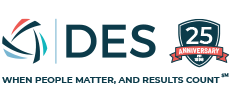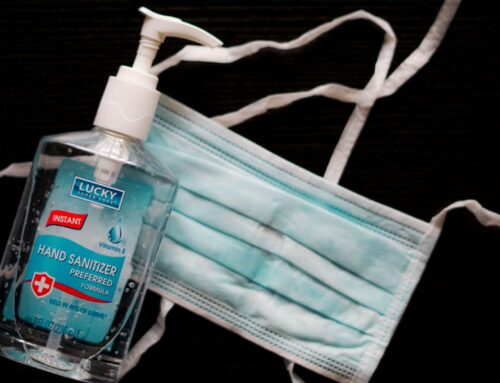The U.S. Department of Labor (DOL) issued its first official guidance for employers and workers about the paid-leave provisions in the coronavirus relief bill that was signed into law on March 18.
The DOL plans to release additional information to clear up any confusion over the new mandate and to assist employers with their compliance efforts. “We remain committed and are working around the clock to provide the information and tools for employees and employers alike,” said DOL Wage and Hour Administrator Cheryl Stanton.
Here are some key points for employers to note.
Emergency Paid-Leave Mandate
The Families First Coronavirus Response Act’s (FFCRA’s) emergency paid-leave provisions apply to certain public employers and businesses with fewer than 500 employees, but there are exceptions available for small businesses and companies that employ health care workers.
Many employers will have to provide up to 80 hours of paid-sick-leave benefits if employees need leave to care for their own or someone else’s coronavirus-related issues. The legislation also updates the Family and Medical Leave Act (FMLA) to provide workers with job-protected, paid leave when they can’t work—either onsite or remotely—because their minor son’s or daughter’s school or child care service is closed due to the public health emergency.
FFCRA also provides for payroll tax credits to employers to cover the cost of providing paid leave to employees under the sick-leave and family-leave programs, noted Linda Jackson, an attorney with Arent Fox in Washington, D.C.
The paid-leave provisions will take effect April 1 and expire on Dec. 31. “The effective date took many by surprise,” noted Benjamin Ebbink, an attorney with Fisher Phillips in Sacramento, Calif. The FFCRA states the leave provisions “shall take effect not later than 15 days after the date of enactment.” Since the act was signed on March 18, many people assumed the DOL would implement the law on April 2.
Although employers will face penalties for violations, the DOL announced a 30-day nonenforcement period for employers that make good faith compliance efforts. The department will focus on compliance assistance during that time and noted that “good faith” means “violations are remedied and the employee is made whole as soon as practicable by the employer, the violations were not willful, and the department receives a written commitment from the employer to comply with the act in the future.”
First Set of Guidelines
Many employers and workers have been confused about how to apply the law or access its benefits when it takes effect. “Given that this law is brand new and was expeditiously created by Congress—meaning that it was written in a short period of time and may not have sufficient guidance on every part of its requirements—it is important to stay alert for updates and guidance,” said Jason Reisman, an attorney with Blank Rome in Philadelphia, when the bill was signed into law.
The DOL’s first set of guidance, which was announced on March 24, includes a fact sheet for employees, a fact sheet for employers and a Q&A document. The department also provided model workplace poster for nonfederal employers and federal employers that are covered by the mandate.
“The legislation will ensure that workers are not forced to choose between their paychecks and the public health measures needed to combat the virus while at the same time reimbursing businesses,” the DOL said.
“With so many workers and so many employers struggling to find their way in these trying conditions, providing guidance on a rolling basis will allow workers and businesses to prepare for the law to go into effect on April 1,” Stanton said. “We remain committed and are working around the clock to provide the information and tools for employees and employers alike.”
Calculating Pay for Sick Leave 
When employees need time off for a covered reason, they must be paid for their normally scheduled work hours, even if their regularly scheduled hours exceed 40 a week. Employers should note, however, that they don’t have to pay for more than 80 hours of leave in a two-week period.
The DOL provided the following example:
An employee who is scheduled to work 50 hours a week may take 50 hours of paid sick leave in the first week and 30 hours of paid sick leave in the second week. In any event, the total number of hours paid under the act is capped at 80.
“For employees with variable hours each week, paid leave would be equal to the average number of hours worked per day over the previous six months,” Jackson noted.
Part-time employees must receive pay for their average number of work hours in a two-week period.
Employers should pay workers their regular rate of pay, using workers’ average regular rate over up to the six months prior to the date leave is taken. If a worker has been employed for less than six months, employers can use the average regular rate of pay for each week the worker has been employed. Commissions, tips and piece rates, must be included in the calculation.
Keep in mind that FFCRA’s paid-sick-leave mandate is capped at $511 a day (and $5,110 total) for a worker’s own care and $200 a day (and $2,000 total) when the employee is caring for someone else.
The mandate serves as a baseline, and if possible, employers may offer more-generous leave options. “Generally speaking, the Department of Labor’s Wage and Hour Division encourages employers to be accommodating and flexible toward employees, particularly those subject to quarantine, to include working remotely or taking additional paid leave,” Jackson observed.
“Given the lack of certainty in existing employment laws as applied to COVID-19,” she added, “employers should take caution before terminating or otherwise disciplining an employee for refusing to perform work that could expose the employee to COVID-19.”

